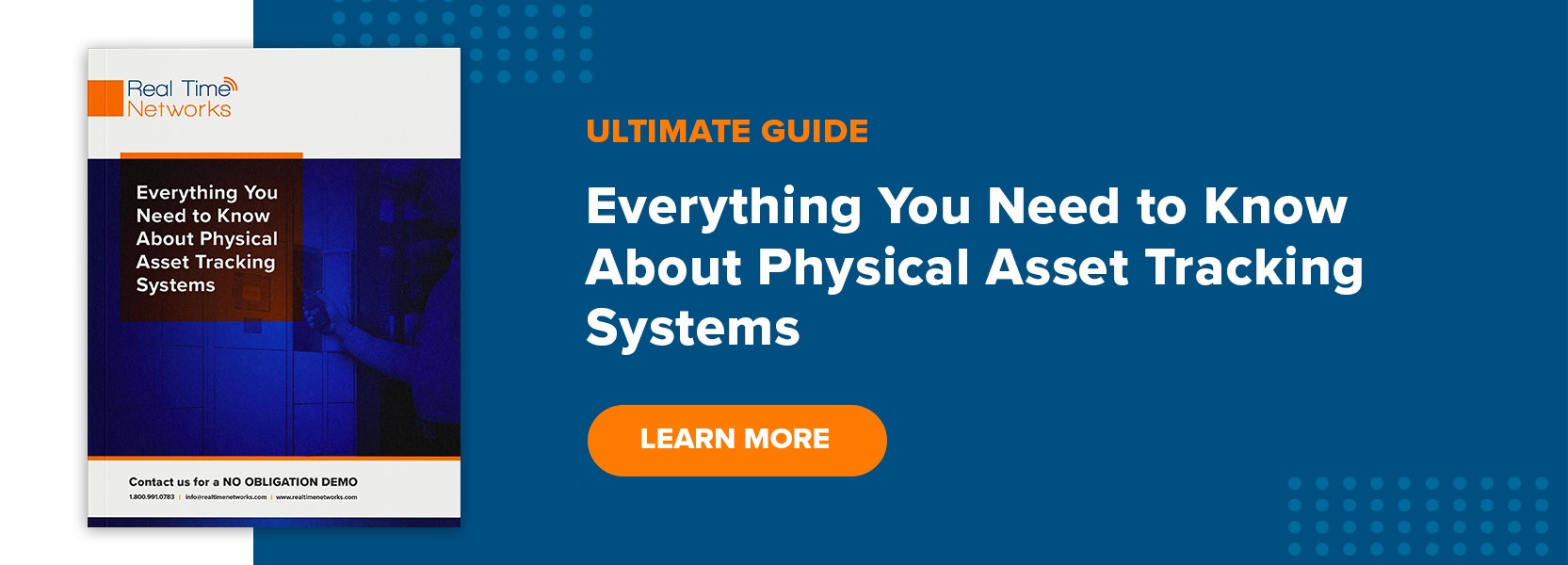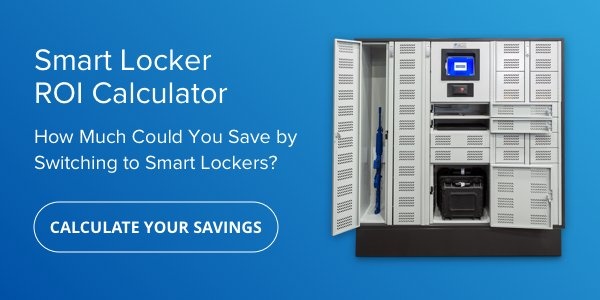By Jay Palter | May 4, 2021
The criminal justice system depends on evidence staying in an unbroken chain of custody from a crime scene to the courtroom. Evidence storage cabinets can be useful tools for law enforcement agencies to improve how they store and manage evidence in their custody.
You can use new computer-enabled systems to streamline all aspects of evidence management, including intake, chain of custody documentation, and proper storage of sensitive evidence. Many different evidence management systems are on the market claiming to offer the right mix of features for everyone. However, in reality, every agency's needs are different.
Improve Criminal Justice Outcomes with Reliable Evidence Storage
Evidence storage cabinets are designed to initiate a secure chain of custody from the moment evidence is processed into the system from a crime scene. Automated systems allow officers to deposit evidence 24 hours a day without technicians needing to come in for overtime.
More reliable evidence management means your agency will see more cases successfully concluded. The automated logging and tracking features in evidence management systems can also streamline local and federal reporting processes.
Simplify Your Purchasing Process with This Straightforward Plan
Finding the right evidence management solution may take some planning, but it doesn't need to be complicated. By following a few simple steps up front, you can make the rest of your purchasing and design process much smoother. We recommend taking these three planning steps:
- Define your requirements.
- Determine your site constraints.
- Evaluate your options.
Define Your Requirements
Before comparing evidence storage cabinets, you first need to outline what your agency's requirements are. These will typically break down into a few categories. To assess your requirements in most of these categories, you will want to analyze a sample of past and current cases to determine the likely range of your future storage needs. Consider:
Compartment Size
What size are the evidence storage containers? Do you need just envelope and single-box storage, or will you need bulk storage?
Scalability
Do you expect your storage needs to scale up slowly over time, or do you foresee a rapid expansion as a possibility? Or might your storage needs scale down in the future? Perhaps your agency has been holding a large volume of archived evidence that will pass its retention date in the next few years. After that point, you might be able to scale down to a smaller storage system.
Climate Control
Biological specimens require special refrigerated storage to remain viable. Consult local and federal guidelines to determine the range of refrigerated storage you'll need for the types of biological evidence your agency must retain.
Aside from biologicals, electronic devices holding digital evidence also require climate control, just of a different kind. Instead of refrigeration, they require consistent, moderate temperatures and low humidity.
Retention Schedule
Will your agency primarily only hold evidence for the short term until you transfer it to another jurisdiction or a larger facility? Or are you expected to provide long-term storage?
Automation
Not every agency has the budget to staff evidence manager and technician positions, and those agencies that do usually can't afford to keep staff on duty during every shift. Automating evidence management makes critical services available to all shifts while saving a great deal of time and money.
Automating evidence processing also puts many mandated compliance tasks in the hands of a control system immune to human error. Automating compliance tasks can be beneficial for agencies of any size, especially for those that need to staff technicians who might lack the specialized knowledge required to handle novel types of evidence properly.
Determine Your Site Constraints
Once you've laid out your specific requirements, you should next assess what constraints exist in your workplace for deploying a new evidence management system. Those constraints would include the budget you have to work with, but you should also consider constraints imposed by the physical space you have to work within.
Many law enforcement agencies need to store large volumes of evidence in small facilities. Determine the footprint you will be able to dedicate in your floor plan to a new evidence storage system. Finding modular systems that are more adaptable to space constraints gives you some wiggle room here.
When assessing your facility, don't forget to factor in the added floor-load capacity needed to support 10, maybe even 20 or more years’ worth of materials. If required, you could request site visits to other law enforcement agencies to see how they lay out their evidence management facilities. Or you might want to contact a structural engineer to perform a site visit of your facility to assess which locations might be viable for a new evidence storage system.
Evaluate Your Options
Once you have your requirements and constraints clear, you can begin evaluating different products. At a minimum, we recommend you compare evidence storage cabinets by these criteria:
Compartment Size
Look for evidence storage cabinets with compartments that can accommodate the different container sizes you need to use. For example, do you need 90 percent of your compartments to be large enough for paperwork and evidence envelopes but need to have 10 percent large enough for firearms and long guns? Pass-thru cabinets are specifically designed to work in conjunction with a large evidence management team
Durability
You want cabinets that can remain an essential part of your evidence management process for years to come. Look for cabinet systems built from high-grade materials, such as 18-gauge steel. These materials not only last longer but provide better physical security for sensitive material evidence.
Modular Options
Modular evidence management systems are scalable up or down, which helps your agency adapt should needs change in the future. They allow you to combine compartments of different sizes in different configurations.
Transaction Logging
Your chain of custody will only be as good as the records your management system keeps. What kind of transaction logging does each system you're comparing offer?
Do they only offer time stamp logging? Are users authenticated? How so? By a PIN that could easily be shared, or by biometrics, such as fingerprints or iris scans? Some management systems can even log a photo of the person performing a transaction for better accountability.
Workflow Support
Automated management systems can perform some advanced workflow support that previously required evidence managers to be directly involved in simple tasks. Suppose you need a higher level of accountability for evidence handling. In that case, you could look for systems that prompt detectives, technicians, and other employees to log notes when they sign evidence in or out.
For example, you could require personnel to log the associated report they need the evidence for or the external requesting agency or DA for whom they're pulling the evidence. This enhanced logging helps prevent accidental gaps in the chain of custody.
Management Features
Compare other features that make evidence management simpler for your staff. Evaluate how easily supervisors can modify user and system behavior in the cabinet systems you're considering.
Can you pull the logs you need for compliance and organizational reporting? Can you quickly add or remove personnel from the system? Can a management system notify you if an officer is late returning evidence they've signed out?
Climate Control
Every organization will likely need some combination of regular and climate-controlled storage. Don't complicate your evidence management process with separate systems.
Look for a management system that can do both. In addition to saving on the cost of separate systems, you'll get unified user management and workflow support, making administration much more straightforward.
Integration
Many electronic evidence management systems can integrate with other management and security platforms. Even if you don't have any deployed today, purchasing evidence storage cabinets with integration options will allow you to connect different systems that you buy down the road quickly.
Service & Support
Electronic evidence storage cabinets are complex systems, which will inevitably need updates, customizations, and maintenance. You should make sure to evaluate more than just the hardware and software. Investigate what support options you will get from various providers.
You're looking for more than just a vendor. You should look for a long-term business partner. You want a provider who will be available to resolve minor user configuration issues when they pop up and who will respond right away when a technical problem rears its ugly head the night before a large case goes to trial.
Do a Little Planning for Better Evidence Management
Use this framework to simplify how you evaluate different evidence storage cabinets. Just a little bit of preparation today will ensure you make the most cost-effective purchasing decision for your agency. Not only will you save capital funds upfront, but you will also streamline how your officers and evidence room team will work for years to come.
Ready to learn more ways to improve your agency's performance with evidence storage cabinets? Check out our e-book, Digitizing Process Control: A Step-by-Step Guide.
Subscribe to our blog

Jay Palter
Vice President of Marketing & Partnerships






